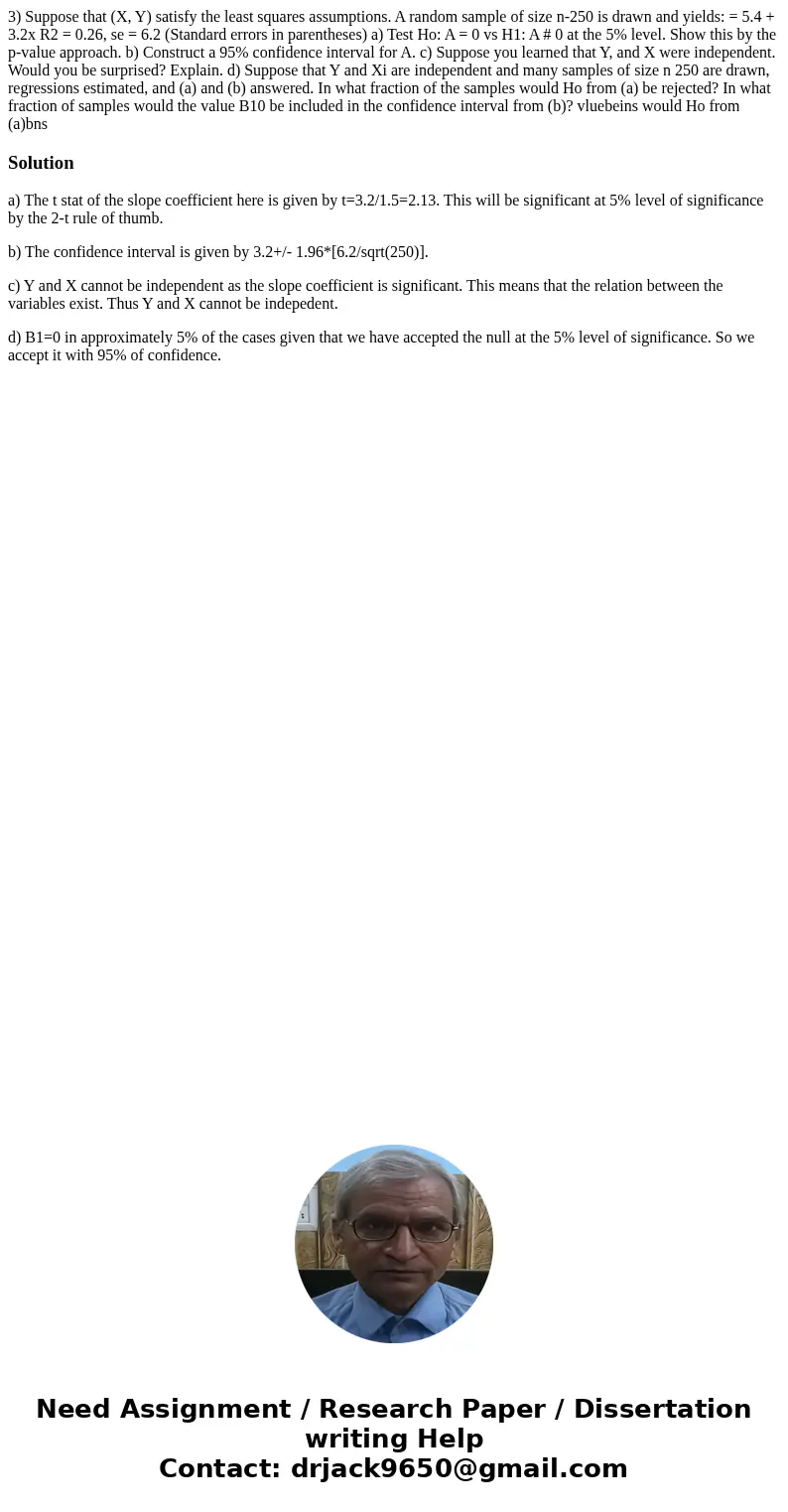3 Suppose that X Y satisfy the least squares assumptions A r
3) Suppose that (X, Y) satisfy the least squares assumptions. A random sample of size n-250 is drawn and yields: = 5.4 + 3.2x R2 = 0.26, se = 6.2 (Standard errors in parentheses) a) Test Ho: A = 0 vs H1: A # 0 at the 5% level. Show this by the p-value approach. b) Construct a 95% confidence interval for A. c) Suppose you learned that Y, and X were independent. Would you be surprised? Explain. d) Suppose that Y and Xi are independent and many samples of size n 250 are drawn, regressions estimated, and (a) and (b) answered. In what fraction of the samples would Ho from (a) be rejected? In what fraction of samples would the value B10 be included in the confidence interval from (b)? vluebeins would Ho from (a)bns 
Solution
a) The t stat of the slope coefficient here is given by t=3.2/1.5=2.13. This will be significant at 5% level of significance by the 2-t rule of thumb.
b) The confidence interval is given by 3.2+/- 1.96*[6.2/sqrt(250)].
c) Y and X cannot be independent as the slope coefficient is significant. This means that the relation between the variables exist. Thus Y and X cannot be indepedent.
d) B1=0 in approximately 5% of the cases given that we have accepted the null at the 5% level of significance. So we accept it with 95% of confidence.

 Homework Sourse
Homework Sourse